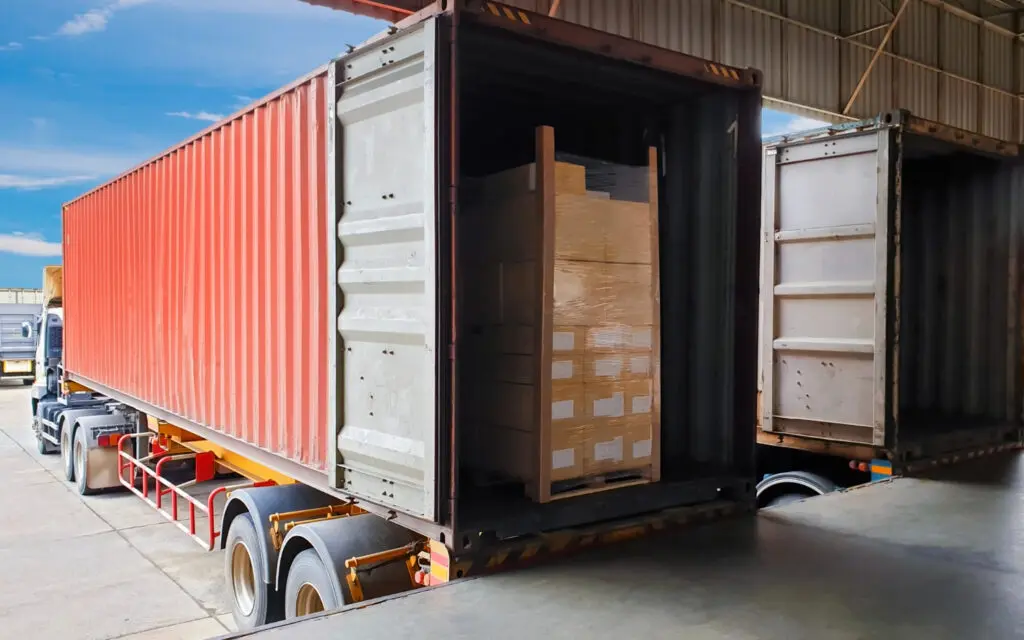Fleet compliance can be overwhelming, especially when you’re just getting started. How do you keep your drivers safe on the road? What regulations apply to your type of business? And what paperwork needs to be filed with the government?
Don’t worry – we’re here to help! This guide will walk you through everything you need to know about fleet compliance.
We’ll cover regulations specific to your industry, driver safety tips, and filing requirements. So whether you’re just starting or running a fleet for years, this guide has everything you need!
What Is Fleet Compliance?
Fleet compliance ensures that a company’s fleet of vehicles meets all applicable federal, state, and local regulations. This includes vehicle registration and maintenance to driver training and record keeping.
Achieving and maintaining fleet compliance can be challenging, but it’s essential for any business that operates a fleet of vehicles. Not only does compliance help protect your employees and customers, but it can also save you money in the long run by avoiding costly fines and penalties.
What Is The FMCSA?
Federal Motor Carrier Safety Administration (FMCSA) is a US regulatory body responsible for the trucking indU.S.try. The agency sets standards for things like hours of service and vehicle maintenance and investigates accidents. It also issues licenses to trucking companies and drivers and enforces compliance with safety regulations.
What Businesses Are Subject To Fleet Compliance?
Large businesses with vehicles used for business purposes are subject to fleet compliance. This includes companies with a fleet of vehicles, such as delivery trucks or company cars.
Fleet compliance is the process of ensuring that all the vehicles in a company’s fleet meet the standards set by the government. These standards can include things like emissions requirements and safety regulations.
Regulations Overseeing
Permits And Registration
It would be best if you did a few things to ensure your fleet complies with all regulations. First, you will need to obtain the proper permits for your vehicles. Depending on the type of vehicle and where you plan to operate, you may need a special license from the state or local government.
Next, you will need to register your vehicles with the proper authorities. This is usually done through your state’s Department of Motor Vehicles (DMV). You will need to provide proof of insurance and the make, model, and year of each vehicle.
Licensing
There are a few key things to keep in mind when it comes to the licensing of fleet compliance. First, it is essential to ensure that all drivers have the proper licenses for the vehicles they will be driving. Second, it is necessary to have a system to track and monitor compliance with licensing requirements. Finally, it is essential to have a plan in place to deal with licensing requirements violations.
One of the most important things to keep in mind when it comes to the licensing of fleet compliance is that all drivers must have the proper licenses for the vehicles they will be driving. This means that if a driver does not have a valid license, they will not be able to drive the car. In addition, it is essential to ensure that all drivers have the proper insurance for the vehicles they will be going.
Drivers
There are a variety of drivers that contribute to fleet compliance. One of the most important is ensuring that drivers have the proper training and certification to operate the vehicles in their fleet. This includes initial training and ongoing education to keep drivers up-to-date on best practices and changes in regulations.
Another critical driver of fleet compliance has robust vehicle maintenance and inspection programs in place. These programs help to ensure that vehicles are safe and compliant with all relevant regulations.
Finally, effective communication between fleet managers and drivers is essential for maintaining compliance. This means communicating expectations around compliance and providing regular updates on changes in regulations or best practices.
Maintenance And Repairs
Repairing and maintaining fleet vehicles are crucial to keeping them compliant with regulations. Depending on the size and type of fleet, there may be different compliance requirements. For example, a trucking company would need to ensure that its trucks meet all federal and state regulations before they can operate.
Safety And Risk Mitigation
Fleet operators must ensure compliance with safety regulations. Non-compliance can lead to accidents, injuries, and even fatalities. Additionally, non-compliance can result in hefty fines and penalties. There are several ways to mitigate the risks associated with fleet compliance.
First and foremost, operators should comprehensively understand all relevant safety regulations. They should also develop policies and procedures to ensure compliance with these regulations.
Operators should also create a culture of safety within their organization. This can be done by educating employees on the importance of safety, emphasizing the importance of compliance, and holding everyone accountable for following safety procedures.
Finally, operators should consider partnering with a compliance management company. These companies can help operators stay up-to-date on safety regulations, develop compliance policies and procedures, and provide ongoing support to ensure continued compliance.
DOT’s Fleet Compliance Regulations
Driver-Vehicle Inspection Reports
DOT’s compliance regulations for commercial vehicles are called Driver-Vehicle Inspection Reports (DVIRs). DVIRs help ensures that commercial vehicles are safe to operate and comply with DOT regulations. All commercial vehicles must be inspected daily by a qualified inspector, and the results of these inspections must be recorded on a DVIR.s
These reports help inspectors to identify potential safety problems, such as worn tires or defective brakes. If a problem is found during an inspection, the inspector will note it on the DVIR, and the vehicle owner will be required to make repairs before the vehicle can be operated again.
Hours-Of-Service Logs
The hours-of-service (HOS) regulations are the mainstay of trucking fleet compliance with DOT regulations. The HOS rules limit the number of hours that a truck driver can operate a commercial vehicle within a certain period. There are two types of HOS logs: paper and electronic.
Paper logs are the traditional method of recording HOS information and are still used by many trucking fleets. However, more and more fleets are adopting electronic logging devices (ELDs) to track and record HOS data automatically.
The hours-of-service rules are complex, and there are several different ways that they can be violated. For example, drivers may exceed the maximum number of hours they can drive in a day, week, or month. They may also go beyond the 14-hour daily limit or fail to take the required 30-minute break after 8 hours of driving.
International Fuel Tax Agreement Reporting
The International Fuel Tax Agreement (IFTA) is a cooperative effort between the contiguous 48 states and Canadian provinces to simplify the reporting of fuel use taxes by interstate motor carriers. DOT-regulated fleets must comply with IFTA requirements, as failure can result in significant penalties.
DOT-regulated fleets operating in IFTA jurisdictions must obtain an IFTA license and decal for each vehicle used in interstate commerce. These licenses and decals must be acquired from the registered vehicle’s jurisdiction. In addition, fleets that do not comply with IFTA requirements may be subject to additional scrutiny from DOT inspectors.
Compliance, Safety, And Accountability Scores
As the trucking industry continues to grow, so do the compliance and safety regulations that truck fleet operators must follow. The U.S. Department of Transportation’s (DOT) Federal Motor Carrier Safety Administration (FMCSA) is responsible for setting and enforcing these regulations, designed to protect motorists and truckers alike.
U.S.e, the vast majority of truck fleets operate safely and within the bounds of the law; there are always a few bad apples that give the industry a bad rap. To crack down on these unsafe operators, the DOT developed a compliance, Safety, and accountability system (CSA).
Pre-Employment Safety Screening
Pre-employment safety screenings are a requirement for all commercial truck drivers in the United States. The Department of Transportation’s (DOT) Federal Motor Carrier Safety Administration (FMCSA) requires that prospective truck drivers undergo a pre-employment screening process to ensure they are physically and mentally fit to operate a commercial motor vehicle.
The pre-employment safety screening process includes a medical examination, drug test, and background check. A certified medical examiner must conduct the medical analysis and include a review of the driver’s medical history, physical examination, and vision test.
Pre-Employment
Pre-employment drug testing is required by the Department of Transportation (DOT) for all commercial motor vehicle (CMV) drivers. The regulations are designed to keep safe drivers on the road and to protect the public from the dangers of impaired driving.
Post-Incident Alcohol And Substance Use Testing
It is well-documented that alcohol and substance abuse can hurt an individual’s ability to perform their job safely. In fact, according to the National Institute on Drug Abuse (NIDA), drug use among employees in safety-sensitive positions can lead to accidents, injuries, and even fatalities.
For these reasons, drug testing has become a common practice in many industries, including transportation.
Fleet Compliance Best Practices
Develop A Fleet Safety Policy
Several key components should be included in a fleet safety policy. First, businesses should clearly define what is expected of their employees regarding safety.
This might include requiring employees to wear seat belts, obey speed limits, and avoid driving while under the influence of drugs or alcohol. Employees should also be aware of the consequences of violating the safety policy, such as losing their driving privileges or being fired.
Have Access To A Detailed Database
Fleet managers need access to a detailed database of compliance best practices. This will ensure that they can adequately assess and manage the risks associated with their fleet operations.
Additionally, this information can be used to improve the efficiency and effectiveness of fleet management processes.
Be Proactive In Renewal Management
One of the most important things businesses can do to stay compliant is to be proactive in their renewal management. This means keeping track of deadlines and taking action before they expire.
It’s also essential to have a system for tracking compliance-related information, such as vehicle registration and driver’s license renewals.
Maintain Driver And Vehicles Inspections Reports
Maintaining driver and vehicle inspection reports as part of your fleet compliance best practices is essential. These reports can help you identify potential maintenance issues, ensure that your vehicles are up to standards, and keep track of your fleet’s overall performance.
Keep Track Of Vehicles Throughout Their Life Cycle
As your organization’s fleet grows, it becomes increasingly essential to have a solid system to track vehicles throughout their life cycle. This includes everything from acquisition and maintenance to disposition and replacement. A good fleet compliance program is key to ensuring that your vehicles are properly maintained and safe to operate.
Be Prepared For New Requirements
When it comes to fleet compliance, it’s essential to be prepared for new requirements that may arise. You can ensure that your fleet complies with all relevant laws by staying up-to-date on the latest compliance regulations. There are a few best practices to follow regarding fleet compliance.
First, make sure to keep accurate records of all compliance-related activity. This includes maintaining up-to-date driver’s licenses, vehicle registrations, and insurance information.
Additionally, conduct regular safety audits of your fleet to ensure that all vehicles and drivers comply with safety regulations. Finally, create a written policy that outlines your fleet’s compliance procedures and make sure all drivers and staff are aware of it.
Following these best practices can help ensure that your fleet stays compliant with all relevant laws and regulations.
Implement A Fleet Management Software
Most fleet managers are familiar with the importance of compliance with government regulations. However, there is more to compliance than just following the letter of the law. Best practices in fleet compliance can help you keep your vehicles on the road and avoid costly penalties.
Conclusion
Businesses should always stay on top of their fleet compliance. Doing so will help avoid DOT penalties, legal risks, and insurance rate increases. A good handle on your vehicles’ compliance statuses can also improve driver safety and morale.
Use this guide to build a comprehensive fleet compliance program for your business that covers every aspect, from registration renewals to roadside inspections. To know more about fleet compliance or anything related to fleet management, check out Detrack now!













